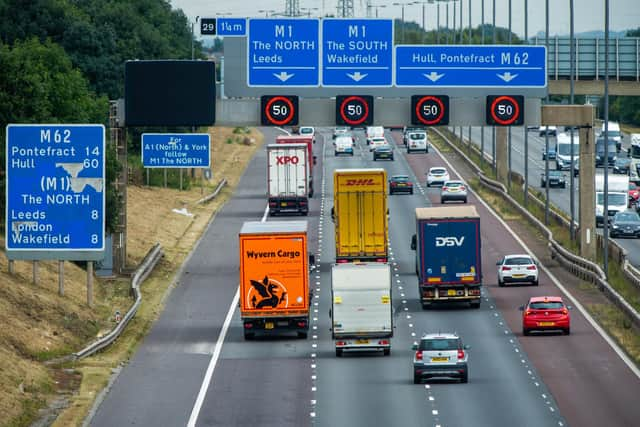Why smart motorways are such a failure at detecting breakdowns - Yorkshire Post Letters
Your report "Stranded cars 'going unseen' on motorways" (The YP 16/12) would be astonishing if it were not so predictable, given the half-baked and cheese-paring nature of National Highways' initial implementation of the schemes, which now account for some 10 per cent of the overall motorway network.
That fully one in five 'live lane' breakdowns to date has gone undetected is utterly appalling, and an indictment of the way in which the originally approved blueprint for smart motorways was not honoured.
Advertisement
Hide AdAdvertisement
Hide AdFurthermore, you report that in four of the five regions with smart motorways, only one has managed consistently to meet a target detection time of 20 seconds on average. The others manage worse than double the target.


In January 2020, a BBC Panorama programme interviewed the former Roads Minister Mike Penning, who stated that he originally signed off the proposal to introduce smart motorway schemes following a trial on a stretch of the M42. Mr Penning agreed that the roll-out of the ‘smart’ motorway schemes had not matched the specifications he approved.
The Panorama programme also reported that radar technology, to detect stopped vehicles and automatically set warning signs, was only installed at that time on two sections of the M25 and had not been sited elsewhere.
It would seem that National Highways has been running to catch up, with stopped vehicle detection (SVD) finally retrofitted to all smart motorways earlier this year.
Advertisement
Hide AdAdvertisement
Hide AdHowever, while the Office for Rail and Roads chief executive now states that smart motorways are as safe as their previous arrangement "but the number of live lane breakdowns is higher", it should be obvious that on a smart motorway, by definition, any other form of breakdown is hardly possible when the former hard shoulder has become a live running lane and so-called refuge areas are generally fewer and farther between than the original approval expected.
It is incredible that an inquest into one of the many smart motorway fatalities of recent years heard that the Highways Agency (as National Highways then was called) has no legal duty of care to road users.